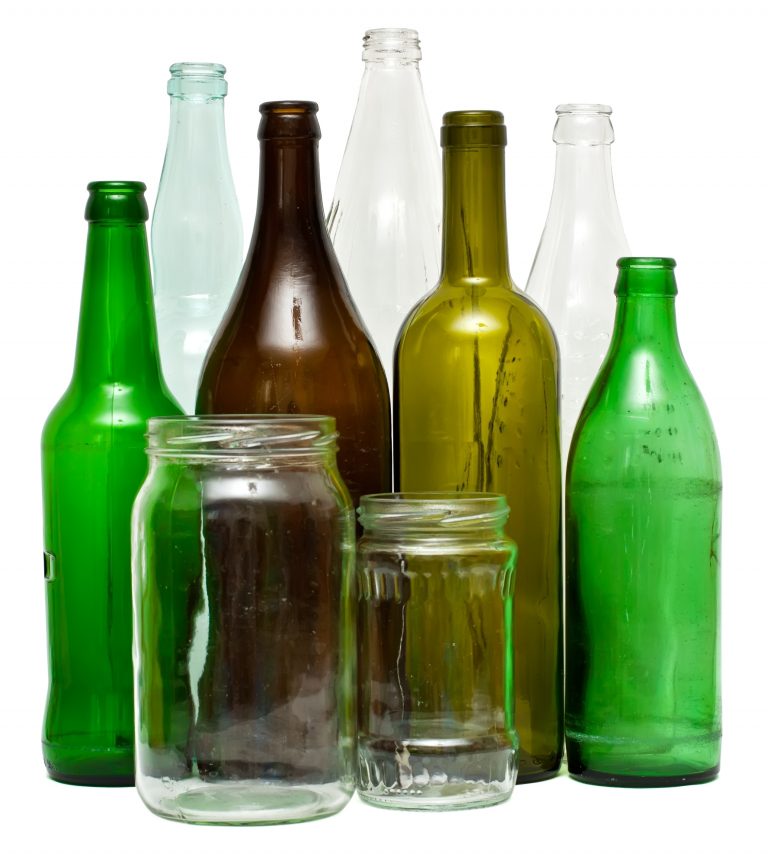- Glass is a finite resource, although the required raw materials are still abundantly available.
- Glass recyclate is widely available.
Mass
The relatively high mass of glass packaging materials results in a relatively large environmental impact:
- more material used;
- higher energy consumption during transport;
- the maximum mass reduction that can be realised is limited due to the vulnerability of glass.
Types of packaging materials
Because of its excellent barrier properties, glass is suitable for vulnerable products that must have a long shelf life. The high degree of transparency of glass improves product visibility and makes this material highly appealing for marketing purposes.
Process effinciecy
- The production of glass and the packaging process are two separate processes. This means that glass packaging materials must be transported to the packager while empty.
- This has a major environmental impact on the transport and storage of empty packaging materials, depending on the distance that the empty packaging materials must travel.
Protection
- Glass has excellent barrier properties and chemical resistance, making it an ideal material for products with a long shelf life.
- The mechanical protection requires extra attention because of the material’s vulnerability.
Reuse
- Because of its chemical resistance, glass is easy to clean. That is why it has been used for reusable packaging materials, such as beverage bottles, for a long time.
- A deposit system is often used for glass packaging materials.
Collection
- Many countries have an efficient glass collection system in place and the material is relatively easy to recycle.
- In the Netherlands, glass has been collected from households in glass containers since the 1970s. At approximately 90%, the collection percentage has been high for years.
- Glass from industrial waste mainly comes from the food service industry. A return system, for example for soft drinks bottles, is in place. Organisations have to sign contracts with a waste collector for single-use bottles.
Sorting and recycling
- Any contaminants are eliminated from the collected material, which is then used for the production of new glass packaging materials.
- Many municipalities separate glass by colour. Clear glass can be used to make new clear glass, but coloured glass cannot be used for the production of clear glass. The most common colours used in glass are clear, green, and brown.
Use of the recycled material
- Traditionally, a lot of recycled material is used for the production of glass. The exact amount differs per colour of glass. For clear glass, 25-60% recycled material can be used. For brown glass, this figure increases to 70-85%, and it is 85-95% for green glass.
- By using recycled glass, the use of virgin raw materials and the energy required to produce new glass are reduced.
- During the packaging design process, the sorting and recycling of glass can be taken into account, for example by making the glass translucent and by avoiding the use of full-body plastic shrink sleeves.
Challenges in the chain
- Contaminants that end up in the glass container. Metal lids are not seen as contamination, but stone jars are. Metal can easily be separated from the stream of glass shards by using a magnet or an eddy current, which means it does not pose a problem for the recycling process.
- Stone is harder to remove from the glass waste stream. It can lead to flaws in the final packaging, such as uncontrollable tension in the glass and ill-formed packaging materials.
- Glass that was not used as a packaging material, such as oven dishes, should not be disposed of in the glass container. It can have similar detrimental effects as stone.
